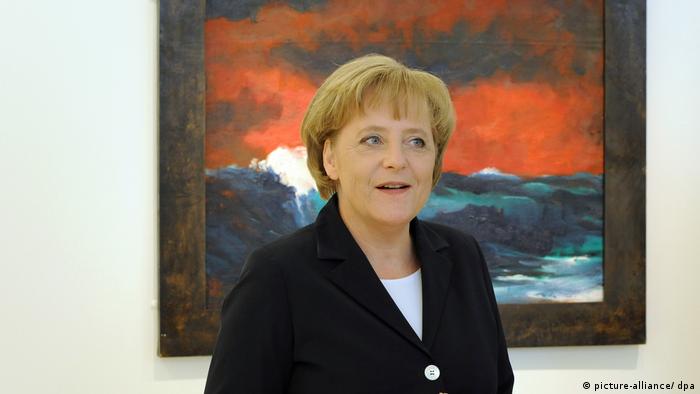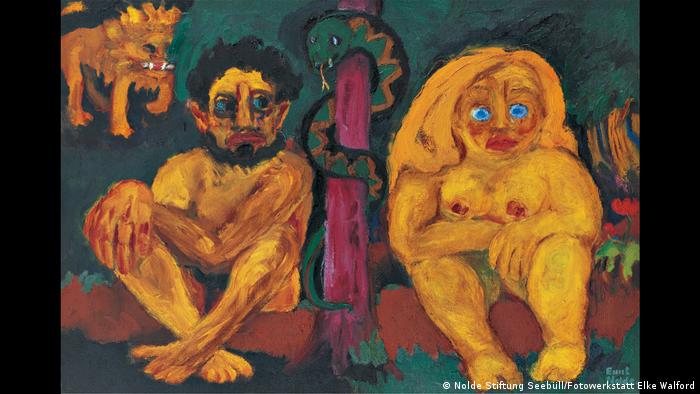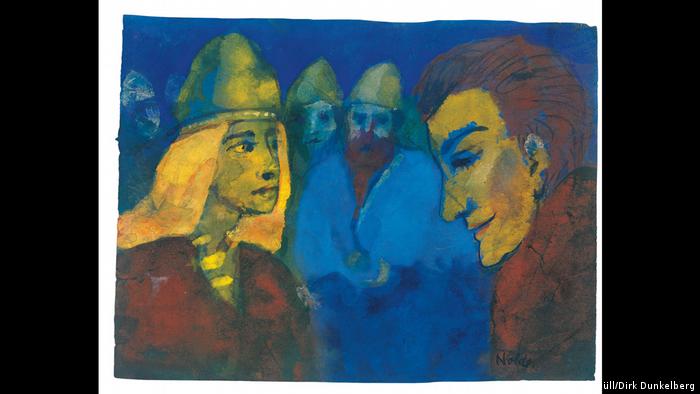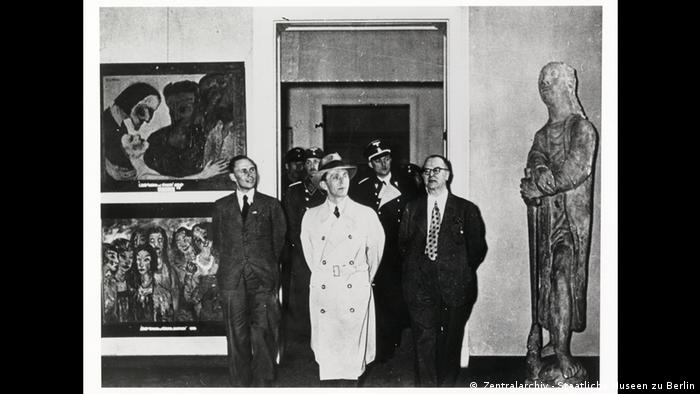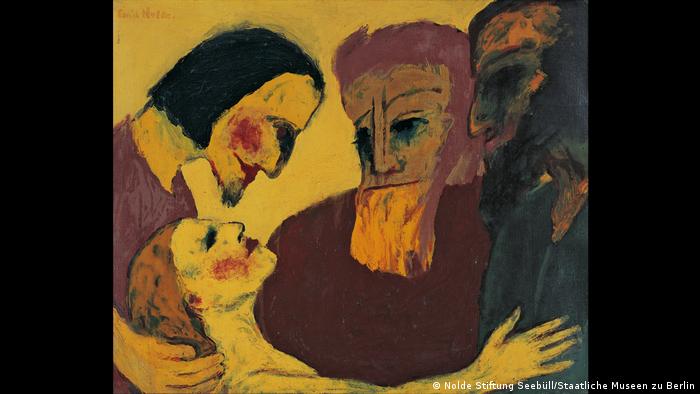For Emil Nolde, there is no more room in the Chancellery. Shortly before the Start of the great exhibition in Berlin Nolde-expert Bernhard Fulda, talks about the anti-Semitism of the artist and the role of art in politics.
After the return of paintings of the painter Emil Nolde from the work rooms of the German Chancellor, Angela Merkel, also as a substitute mentioned the Work of the expressionists Karl Schmidt-Rottluff are now in question. Thus, Agency is negotiated according to reports, behind-the-Scenes again about other possible loans of the Stiftung Preußischer Kulturbesitz. Nolde (1867-1956) was defamed by the Nazis as a “degenerate artist”. But at the same time, the painter, the Nazi party was a member, and to the knowledge of the art, an anti-Semite, a racist and a staunch national socialist historians. This is the goal of the exhibition “Emil Nolde – A German legend. The artists in the Nazi era”, which from 12. To see April in the Berlin national gallery, Co-curator, historian and Nolde-researcher Bernhard Fulda.
Deutsche Welle: Mr. Fulda, Emil Nolde’s images were soft out of Angela Merkel’s work room. Would you have expected as a historian more art expertise in the Chancellery? Or more historical consciousness?
The Chancellery and Angela Merkel is about the historical research, to Emil Nolde for over five years. The Frankfurt Städel exhibition 2014, my wife and I are already first results of the research project (in the order of the Nolde-Stiftung research of Fulda, Aya Soika on the relationship between Nolde to the NS-Regime, editor’s note. d. Red.) presented had, what was taken care of already for some attention – that was known.
In the course of the inquiry, whether we can get a picture for our exhibition, we have, of course, the catalogue of the exhibition, so the still-unpublished research to the Chancellor’s office communicates. And the us was granted a loan from the loan, which hangs in the Chancellor. The real question is, how do you explain this return now. And what Mrs Merkel’s Position in their dealings with art?
Art can be an incredibly effective means of communication, to say to foreign visitors: what do we do German, the German state, its decision-makers, which is dominated by the German history, from its positive as well as negative aspects.
The communication about Nolde’s picture could have gone better?
We are pleased that we get the picture, because it is symbolic of a long-term, cultural, art historical, and also political history. Why all of a sudden everything very quickly had to go, I can not estimate. Also I would have thought, after we made the Request at the beginning of February, in the Chancellery it would be thinking, what images you can fill the resulting gap.

The historian and Nolde-researcher Bernhard Fulda
You have spent years researching to Emil Nolde. What makes the artist today is so objectionable?
There are two main things. The heroes of history set by the artist himself in the world, and then by Werner Haftmann (German art historian, editor’s note. d. Red.) and especially Siegfried Lenz (German writer, author of the “English hour”, Anm. d. Red.) literature has been shaped and reshaped, a drop from a certain height to the historic Nolde. A more extreme re-interpretation and re-interpretation is hardly conceivable.
Already before 1933, Nolde has knitted to the own legend – that of the eternally misunderstood artist. Then he reworded it to the legend of the Jews, the persecuted, the German pioneer of the newer painting. And after 1945, it is followed at once by the Jews, but by the national socialists. This is a amazing reinterpretation of one’s own life history – but it was welcomed with enthusiasm in German society. Amazing how fast such a Transformation from sinners to saints.
The Story of the secretly created “unpainted pictures”. Draw the image of the dissident artist who was ideologically to the Regime fond of, but at least artistically revoked constantly acted. This is an almost brilliant, but false narrative. This myth we deconstruct now in our exhibition.
Thus, two very important narratives collapse and open a new Panorama over the art in the Nazi era and afterwards, of the aura-to-value prose, political interests groups, the say, the not belongs in a Museum, this belongs in a Museum, this belongs in the Chancellery or not. And you understand at once, that art is always part of a broader social and communicative process and, therefore, relevant. Nolde gives us the opportunity, about the relationship between German identity, art, and changing political power relations, but also medial conditions, think.

Karl Schmidt-Rottluff
You may see two paintings by Schmidt-Rottluff to fill now the gap in the Chancellery. An artist who was about the same time comes, and also anti-Semitic. A good choice for the office of Chancellor Merkel?
Schmidt-Rottluff was quoted in the media with anti-Semitic statements during the First world war, at a time when the anti-Semitic war propaganda in Germany in the fight against the allegedly materialistic England had reached a peak. The artist has since phrases are common, which probably took the vast majority of the German population in one way or another.
That Schmidt-Rottluff in the 1930s and early 1940s, years, nowhere affirmatively to the Regime, or anti-Semitic towards his fellow men is expressed, seems to be not relevant. But that anti-Semitic Expression, life, long to him, the Label anti-Semite will stick, that can’t be right. Before any court, the stock would have.
However, in the heated debate, it’s more than a question of whether or not an anti-Semite can hang in the Chancellor’s office. You know, how often the Chancellor to Bayreuth, to hear the wonderful music of the anti-Semite Richard Wagner? So that we can handle, after all.
Nolde, and also the works of Schmidt-Rottluff belong to the art historical Canon. But they are also not one innocent?
That depends on which narrative frame we set. In our catalog you can read how to Nolde, in 1933, tried to qualify for the state artist, as a representative artist of this supposedly young German renewal movement: He sits down and develops a entjudung plan, a territorial solution of the Jewish question by the allocation of fertile land. The main thing is that somewhere away, in order to come out of Germany. And he wishes to submit to Adolf Hitler.
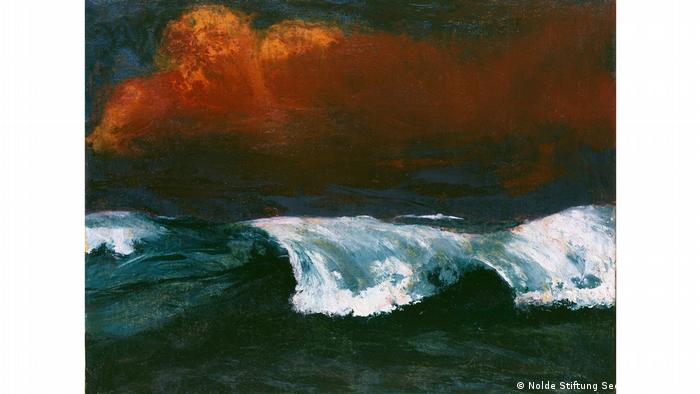
The Original painting “the crusher” by Emil Nolde from the year 1936
This makes Nolde, because he is advised that this looks to be very economic Chivalry. But within the German art scene of the time, which is quite a lot of opportunistic activities, this is a remarkable action, to formulate it carefully. And that’s not the end of the flag pole: If you knit this narrative to a picture from 1933 around, then she is invisible, but you think of when Viewing the image. Then a previously-harmless image no longer looks so harmless. Of course, there is not a single image Nolde from 1933, you are looking at and then have to think: Here Nolde works question visually to the solution of the Jews.
What are the expectations you have of art, hanging there, where the German state-represented?
This is a very very good question! In any case, should be heard many opinions, because different interests and groups of the population have very different expectations of our democratically elected and legitimate representatives. This question engages very essential in the DNA of a mass democracy like ours, a: Is such an art expert, so institutionally qualified Kennertum selected and proposed? Or there should be a collaborative Element, such as in London, where a Base of the many statues remains empty, and with alternating art is played?
There are many ways. You could also say: To the office of the Chancellor, female artists, where there is still a lack of appreciation. That would be a Statement that could be politically communicate symbolically. And the world would once again make it clear why art is relevant.
The German historian Bernhard Fulda in teaches in the UK, Sidney Sussex College, University of Cambridge. In collaboration with the Nolde Foundation Seebüll, which opened its archives, conducted research Fulda to the story of Emil Nolde.
The interview was conducted by Stefan Dege.


